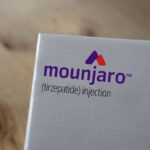Imagine hearing the birds chirp clearly again or enjoying a conversation without straining. That’s the hope behind the upcoming first in-human trial for stem cell therapy targeting hearing loss. We’ll dive into this exciting development and explain why it could change lives.
You know how frustrating it gets when sounds fade away over time. Hearing loss affects millions, but now, companies like Stem Cell Therapy Los Angeles are stepping up with innovative stem cell services. These services use special cells grown in labs to repair damaged parts of the ear.
Let’s break it down step by step so you can see the potential here.
What Causes Hearing Loss?
Hearing loss sneaks up on many folks as they age or after loud noises damage their ears. Most cases—about 90%—stem from sensorineural issues. This means tiny hair cells or nerves in the inner ear get hurt and can’t send sound signals to the brain anymore.
Think of it like frayed wires in a house; no matter how loud the music, the message doesn’t get through. Right now, options like hearing aids make sounds louder, but they don’t fix the root problem. Cochlear implants help some people by bypassing damaged parts, yet they come with limits.
Data shows this hits hard. In the US alone, around 30 million adults deal with hearing loss. Globally, the World Health Organization estimates 1.5 billion people will face it by 2050. You might wonder, “Could this happen to me?” Well, staying informed helps, and that’s where new treatments shine.
How Do Stem Cells Fit In?
Stem cells act like builders in your body. They can turn into different types of cells, including those needed for hearing. In simple terms, scientists take stem cells from sources like skin or blood, tweak them in the lab, and guide them to become auditory nerve cells.
Rinri Therapeutics, a spin-off from the University of Sheffield, leads this charge. Their product, Rincell-1, uses these cells to regenerate damaged auditory nerves. Preclinical tests in animals showed promising results, like improved hearing thresholds by up to 40% in some models.
We suggest exploring stem cell services if you’re curious about regenerative options. These therapies aim to restore natural function, not just amplify sounds. It’s like giving your ear a fresh start instead of a patch.
Inside the First In-Human Trial
Excitement builds as this trial kicks off in fall 2025. The UK’s Medicines and Healthcare products Regulatory Agency (MHRA) gave the green light in July 2025. It’s a randomized, open-label study with 20 patients at three top UK hearing centers.
Half the group has age-related hearing loss, or presbycusis. The other half deals with postsynaptic auditory neuropathy spectrum disorder (ANSD), where nerve signals to the brain glitch. Patients get cochlear implants—standard care—but some also receive Rincell-1 injected via a new, minimally invasive surgical path.

This path, published in Scientific Reports, targets the auditory nerve safely without big cuts. The trial follows folks for up to 52 weeks, checking safety and early signs of nerve repair. No full hearing restoration expected yet, but even small gains could pave the way.
You can picture the impact: participants hearing better through their implants thanks to regrown nerves. It’s a big step from animal studies to real people.
Key Stats on Hearing Loss and Stem Cell Hopes
Let’s look at some numbers to grasp the scale. Here’s a quick table to compare current treatments with what’s coming:
| Aspect | Current Options (Hearing Aids/Implants) | Stem Cell Therapy (Rincell-1) |
| How It Works | Amplifies sound or bypasses damage | Regenerates damaged nerves |
| Effectiveness | Helps 70-80% of users, but no repair | Up to 40% improvement in preclinical tests |
| Invasiveness | Non-surgical to surgical | Minimally invasive injection |
| Availability | Widely used now | Trial starting fall 2025 |
| Long-term Goal | Manage symptoms | Restore natural hearing |
Sources like the NIH highlight that no FDA-approved stem cell treatments exist yet for hearing, but trials like this one build credibility.
Another table shows global impact:
| Hearing Loss Facts | Details |
| US Adults Affected | 30 million |
| Global Projection by 2050 | 1.5 billion people |
| Common Cause | Sensorineural (90% of cases) |
| Economic Cost (Annual, US) | Over $100 billion in healthcare |
These figures underscore the urgency. Boldly, we say this trial could slash those costs by preventing loss altogether.
What Does This Mean for You?
As a reader, you might ask, “When can I try this?” Trials focus on safety first, so full approval might take 5-10 years. But the buzz is real—over 5,000 people inquired about similar studies worldwide.
Stay engaged by following updates from Rinri or checking ClinicalTrials.gov (NCT07032038). Remember, early detection helps; get your hearing checked regularly.
This breakthrough reminds us science moves forward. Stem cell therapy isn’t just hype; it’s a tangible hope. Share your thoughts—have you experienced hearing changes? Let’s chat in the comments.
In wrapping up, the first in-human trial for stem cell therapy in hearing loss marks a turning point. With Rincell-1 leading, we edge closer to silencing the silence for good.






